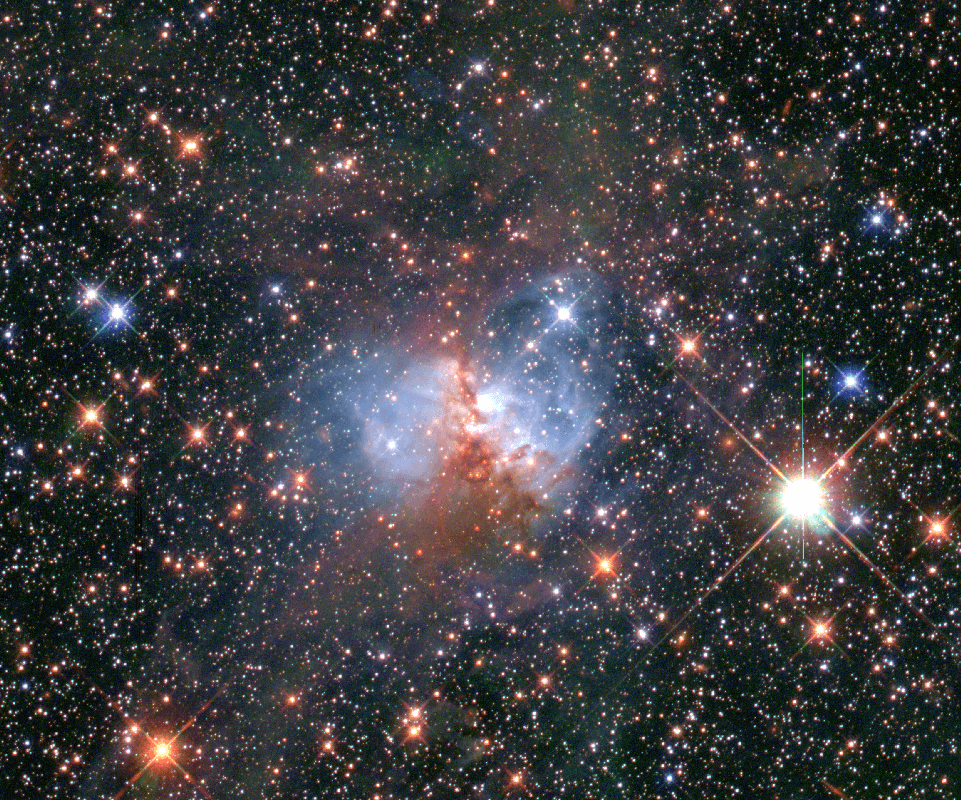Large Magellanic Cloud High-Mass Star Formation:
High-mass stars (stars greater than 8 times the mass of our sun) dominate the luminosity, chemistry, and energy input in galaxies. They produce and disperse heavy elements through violent supernova
explosions. However, their formation remains an open question.
Observations in our own Milky Way can allow us to understand the high-mass star formation at high resolution. However, such observations can be very complicated
since they are staring through the Milky Way disk. Specifically, peering through the Milky Way disk causes confusion along the line of sight, which can make interpretation of emission
ambiguous, and we have trouble assigning distances to sources. To mitigate these problems, I like to observe a nearby galaxy called the Large Magellanic Cloud (LMC).
The LMC is only 50 kpc away (160,000 light years), which is close enough to allow us to resolve stars. The LMC is nearly face-on, allowing us to create unbiased
samples of high-mass star formation that are not possible in the Milky Way. While studying high-mass star formation in our Galaxy is important due to the increase
in resolution and signal-to-noise, studies in the Large Magellanic Cloud are also very important since it is easier to create an unbiased sample of star-forming regions.
I have been very interested in addressing whether high-mass stars can form in isolation or near isolation (i.e., in clusters with masses less than 100 times the mass of our sun).
I created a sample of the most isolated high-mass star-forming regions in the LMC and observed the sources with the Hubble Space Telescope. In my paper, I showed that
none of these apparently isolated regions were nearly isolated at all; they were all forming in clusters. One of these clusters is shown below.

Figure from Stephens et al. (2017). Hubble Space Telescope observations of a high-mass star-forming
region in the Large Magellanic Cloud. The colors in red, green, and blue are Hubble Space Telescope WFC3 filters F160W, F814W, and F555W (~1.5, 0.80, and 0.53 μm), respectively.
The high-mass star-forming region is far from isolated.
In fact, it appears that these high-mass star-forming regions follow "optimal sampling" of the initial mass function (i.e., the most massive star in a cluster is related directly to the cluster mass).
Most studies have assumed "random sampling" of the initial mass function, and this study challenges this assumption.
I also have studied how high-mass stars in the LMC affect dust in the intersteller medium in this paper. I also have
surveyed ~100 compact H II Regions in the LMC in my thesis.